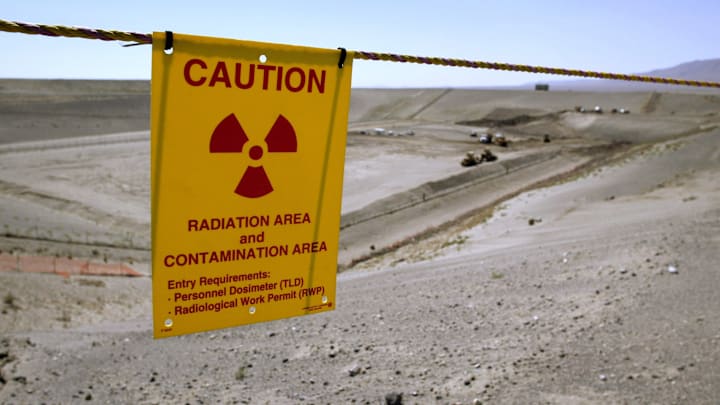In 1949, just as the United States was increasingly feeling the pressure of a Cold War with Russia, the Air Force made a decision that would have consequences for decades to come: They deliberately released radioactive material over the populated area of Hanford, Washington.
The experiment, dubbed Green Run, had purpose. Military intelligence was afraid the Soviets had made progress on nuclear weapons and wanted to see if their radioactive elements could be spotted by instruments. In order to do that, they needed radioactive material in the air to measure.
Hanford was the ideal location. The area’s military base had been in operation since 1943 and was tasked with producing plutonium for the nation’s atomic weapons. In this rural swath of Washington, enough plutonium was being made to feed 60,000 atomic bombs.
Inevitably, some of that material escaped into the air and soil. But Green Run would be a much higher and more concentrated dose. The radioactive material came in the form of iodine-131, which is normally allowed to cool and decay. To keep it active—and because they suspected the Soviets were doing the same—the iodine was “short-cooled” and therefore detectable.
On December 2, 1949, scientists at Hanford poured a caustic chemical on uranium with the hope it would waft into the air. Between 7000 and 12,000 curies were released via 1 ton of short-cooled fuel, which was likely more than officials intended. (The infamous nuclear accident at Three Mile Island had released roughly 17 curies; Chernobyl, 35 million to 49 million curies.)
The resulting plume was massive, covering a 200-mile-by-40-mile area and settling on the ground—not only at the plant, but downwind of it, too. Because it was winter, when no vegetation was being harvested, it was considered relatively safe, although others believed cold weather could simply trap radioactive gases in the ground. It was all a grand experiment, though not one that residents had given their consent for.
When the classified operation was finally disclosed in the 1980s and 1990s, those living near Hanford believed there was a causative effect between the radiation and health problems. Even without Green Run, the area was believed to have been bathed in radiation—sometimes greater than the 17 curies of Three Mile Island per day. Fish and cow’s milk were dosed, subjecting residents to adverse effects.
Those who believed they had been harmed by Hanford's nuclear work became known as “downwinders.” They voiced complaints of cancers, miscarriages, and other health issues. Some sympathized with their plight, while others criticized them for being paranoid. Lawsuits ensued, though only two—plaintiffs with thyroid cancer—were awarded any damages. (Other, smaller settlements were offered in 2015.) Legally, at least, it was too difficult to prove causation between health issues and the site.
Today, the Hanford site is monitored for radiation and is not currently considered a health risk to surrounding areas. Under the auspices of the Department of Energy and the National Park Service, visitors can even tour its B Reactor site, which is considered a National Historic Landmark.
[h/t Gizmodo]
